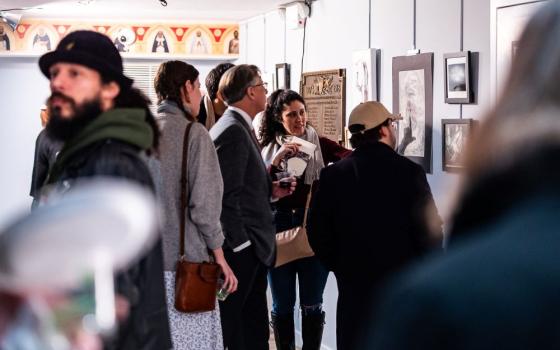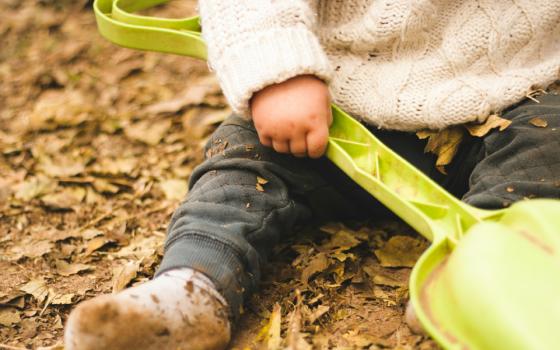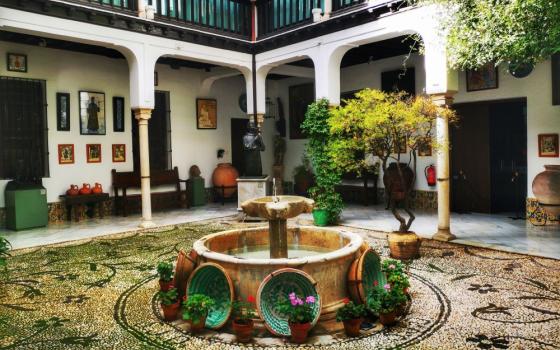Naming new cardinals is among the more important acts of any papacy, because the cardinals form the "electoral college" that will pick the next pope. That’s arguably even more significant this time around, given that Benedict XVI will turn 85 in April – and although there’s no sign of any health crisis, at that age it’s natural to begin thinking about what might come next.
Here are five quick observations about the 22 new cardinals named today by Benedict XVI, including 18 who are under 80 and therefore eligible to participate in a future conclave.
The consistory, when today’s nominees will actually enter the College of Cardinals, is set for Rome Feb. 18-19.
Bring on the Italians
tIt was already a commonplace observation about Benedict XVI that in some ways he has “re-Italianized” the Vatican and the papacy, perhaps a product of his comfort level with Italian ecclesial culture after spending almost the last thirty years in Rome.
Certainly today’s appointments will reinforce those impressions. Prior to today’s nominations, there were 24 Italians among 108 voting-age cardinals, representing 22 percent of the total. With seven Italians among the 18 cardinal electors named today, their share will rise to 25 percent, fully one-quarter of the number of cardinals who will elect the next pope. That’s by far the largest national bloc in the College of Cardinals; the next largest is the Americans, who will have 18 cardinals in total and 11 eligible to vote for the pope.
The preponderance of Italians, however, doesn’t necessarily make it more likely that the next pope will be an Italian. Historically, the Italians have often been divided among themselves, unable to agree on a single candidate, and it’s possible that scenario could repeat itself the next time around.
For instance, Cardinal Angelo Scola of Milan enjoys tremendous support in some quarters, but some Italians remain leery of his deep ties with the Communion and Liberation movement. Cardinal Gianfranco Ravasi, President of the Pontifical Council for Culture, is widely admired for his erudition and outreach to secular culture, but he doesn’t really have a natural base of support among the established Italian “camps.”
In any event, one thing seems certain: Given the high number of Italian electors, it’s difficult to imagine that the next pope could be elected without at last some strong support in Italian circles.
More (and more) Vatican cardinals
Perhaps the most obvious observation about the new crop of cardinals is that it’s top-heavy with Vatican personnel. Ten of the 18 voting-age cardinals, a majority, are officials of the Roman curia or hold some other Vatican job.
Including cardinals who are retired but still under 80, current or former Vatican officials already accounted for 34 of the 108 cardinal-electors, or 31 percent. Including the new nominees, Vatican officials will represent 44 out of 126 electors, or 35 percent.
All things being equal, the strong representation of Vatican officials in the College of Cardinals probably strengthens the possibility that the next pope could be a curial figure – or, at least, it may reduce the bias against electing someone whose last job was in Rome.
Notably, Benedict XVI left one Vatican figure off the list of new cardinals: Archbishop Rino Fisichella, President of the Pontifical Council for Promoting the New Evangelization.
The project of a “new evangelization” is the apple of Benedict’s eye, perhaps the most consistent theme he strikes in laying out his priorities for Catholicism in the 21st century. Given that putting a cardinal in charge of something is a traditional way for a pope to signal that he cares about it, it’s somewhat curious that Fisichella was left off the list.
(By the way, it’s not because Fisichella got the job only recently. Portuguese Archbishop Manuel Monteiro de Castro was named head of the Apostolic Penitentiary just yesterday, and he made the cut.)
Snub to Africa?
tDuring his recent trip to Benin, his second voyage to Africa as pope, Benedict XVI praised the African continent as a “spiritual lung” for humanity and pointed to it as a critically important zone for the future of the Catholic church.
Yet in the appointments announced today, Africa was conspicuous by its absence.
In the run-up to today’s announcement, it was widely believed that at least two Africans would be on the list: Archbishop Telesphore George Mpundu of Lusaka, Zambia, and Archbishop Cyprian Kizito Lwanga of Kampala in Uganda. In the end, however, neither made the cut.
At the moment, there are eleven Africans among the voting-age cardinals. Once the Feb.18-19 consistory takes place, there will still be 11 Africans, alongside 11 cardinal electors from the United States alone – despite the fact that Africa has more than twice the Catholic population of the United States.
In November, the number of African electors will drop to ten, as retired Cardinal Francis Arinze of Nigeria turns 80.
Part of the problem may be that Benedict’s picks today were disproportionately skewed to Vatican officials, and the two Africans who hold senior positions in the Roman Curia are already cardinals: Peter Turkson of Ghana, President of the Pontifical Council for Justice and Peace, and Robert Sarah of Guinea, President of Cor Unum.
In general, today's nominations reinforce the dominance of the West in the College of Cardinals. Only three of the 18 new electors come from the developing world -- one Brazilian, one Indian, and one from China (Hong Kong). In that sense, the College of Cardinals will continue to be unrepresentative of Catholic demography, given that two-thirds of the 1.2 billion Catholics in the world today live in the global south, a share projected to rise to three-quarters by mid-century.
Technocrats, not ideologues
tFrom the outside, people often assume that when a pope picks new cardinals, he must be tempted to “stack the deck” with men who think like him, thereby ensuring that his successor will consolidate his own policies.
In the case of Benedict XVI, that would translate into an assumption that his choices for cardinals ought to reflect his own fairly conservative theology and politics.
While there certainly are no “liberals” among today’s appointments, at least as measured by the secular sense of the term, the list does not appear to be significantly skewed in any particular ideological direction. Mostly, it’s a crop of technocrats – Italians and Vatican officials known more as pragmatic managers than for their theological or ideological point of view.
While there certainly are prominent “evangelicals” among the new bunch of cardinals, meaning men known as strong defenders of Catholic identity – Timothy Dolan of New York, for instance, and Thomas Collins of Toronto – for the most part, these are figures also know for openness and commitment to dialogue, as opposed to a hard ideological line.
The appointments also contain at least two figures with a reputation as theological moderates: Archbishop João Bráz de Aviz of Brazil, President of the Vatican’s Congregation for Religious, who’s been sympathetic over the years to liberation theology in Latin America and who has deep ties to the Focolare movement; and Syro-Malabar Archbishop George Alencherry of India, committed to the Indian church’s efforts on behalf of the tribal underclass.
In that sense, it’s difficult to make the case that Benedict XVI has “stacked the deck” today in a political or ideological sense.
Dolan’s star still rising
tIt’s hard to find anyone in the Catholic world these days whose rise up the career ladder has been more meteoric than Archbishop Timothy Dolan of New York, who will turn 62 a week before he gets his red hat as a cardinal in the Feb. 18-19 consistory.
First made auxiliary bishop of St. Louis in 2000, Dolan has been promoted twice in the last decade: he became the Archbishop of Milwaukee in 2002, and then took over the biggest bully pulpit in the American church as the Archbishop of New York in 2009.
He’s also the elected president of the U.S. bishops’ conference, and more and more, he’s the Vatican’s go-to guy in America. Benedict XVI tapped Dolan to lead a review of seminary life in Ireland as part of the response to the sex abuse crisis, and the pontiff also included him among a set of global heavy-hitters named as members of the Council for New Evangelization.
It’s striking that Benedict XVI was willing to step outside his own skin, if just a little bit, to include Dolan on today’s list of new cardinals. Heretofore, Benedict has been a stickler for the custom that a new cardinal is not named until the previous cardinal of that diocese turns 80 (unless, of course, the retired cardinal dies in the meantime). That’s likely the reason, for instance, that Archbishop Vincent Nichols of Westminster is still in a holding pattern; his predecessor, Cardinal Cormac Murphy-O’Connor, doesn’t turn 80 until August.
Yet Benedict made an exception in Dolan’s case. His predecessor, Cardinal Edward Egan, is still 79, and won’t turn 80 until April 2. It’s another small, but telling, indication that Dolan clearly enjoys the favor of the pope.
For more insight about Dolan, readers may wish to consult with my recent book-length interview with him, titled People of Hope: http://www.amazon.com/People-Hope-Archbishop-Timothy-Conversation/dp/0307718492/ref=sr_1_1?s=books&ie=UTF8&qid=1325857435&sr=1-1



